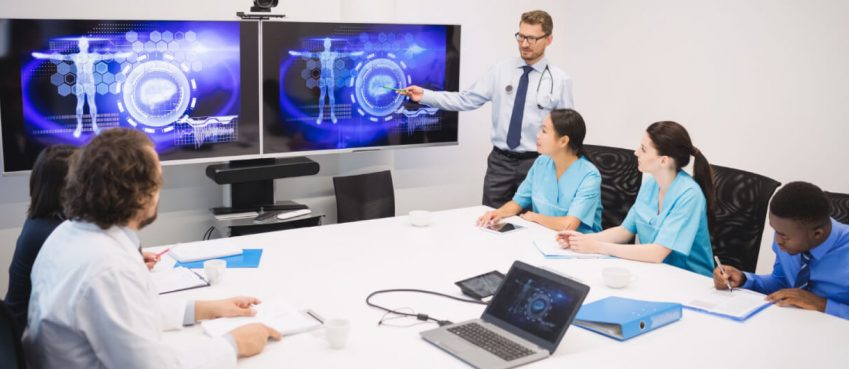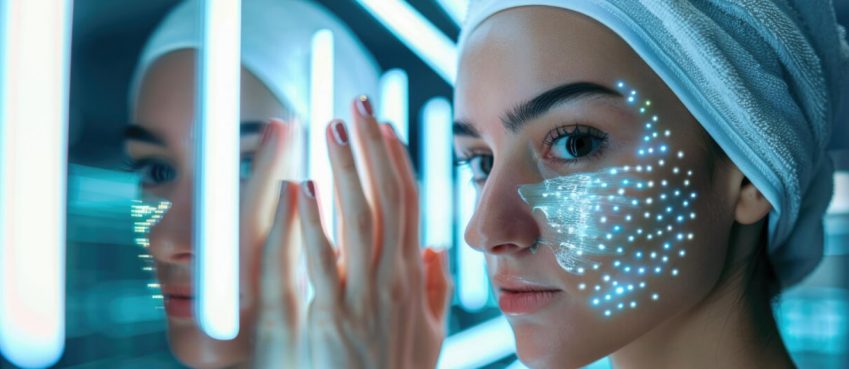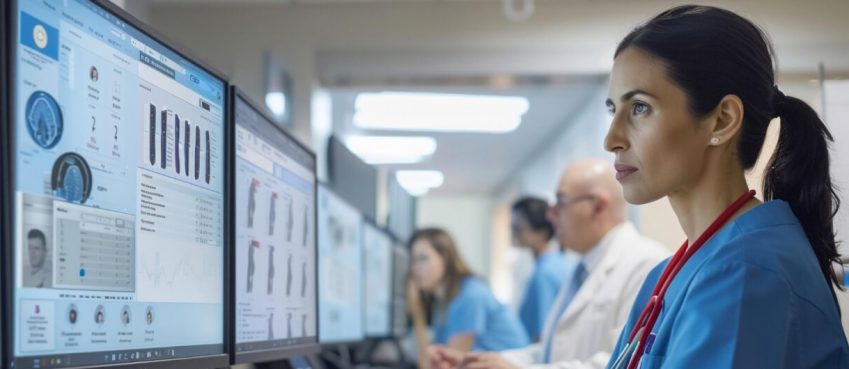
Medical research is an intrepid endeavor driven by innovative scientists and researchers who spend endless hours in laboratories trying to unlock the mysteries of health and illness. Currently, 25,505 labs are operating in the United States, and each one of these conducts a variety of tests and studies every day.
Laboratory research presents unique challenges and potential hazards that demand a proactive approach to safety. In medical research, experiments may involve the use of hazardous chemicals, infectious agents, high-energy equipment, and delicate procedures.
A commitment to lab safety not only safeguards researchers from accidents and exposure but also promotes accurate data collection and reliable results. Moreover, maintaining safety protocols contributes to the overall integrity of the research and prevents the release of harmful substances into the environment.
This comprehensive guide for lab safety is designed to equip medical researchers with essential knowledge and practices to create a secure and productive research environment.
Handling Hazardous Materials
Biological Safety
Biohazardous material handling is an integral component of laboratory safety, comprising various practices and protocols designed to safeguard researchers, the community, and the environment from potential biological hazards. Such hazards could include infectious agents, genetically modified organisms, or any potentially toxic biological substances that pose serious risks if handled incorrectly.
Researchers who handle potentially hazardous biological materials should use single-cell dispensers to reduce the risk of accidental exposure or contamination. By isolating and dispensing individual cells at a time, these advanced tools help eliminate cross-contamination risks compared to traditional bulk handling methods. This level of precision not only enhances the safety of researchers but also contributes to the integrity of experimental outcomes, ensuring that results are untainted by unintended interactions.
Chemical Safety
Always label and store chemicals properly, following Safety Data Sheet (SDS) guidelines. Maintain an updated inventory of chemicals and ensure that researchers are aware of potential chemical hazards and proper handling techniques.
Radiation Safety
If your medical research involves radiation, ensure that all researchers are trained in radiation safety protocols. Monitor radiation levels regularly and follow established guidelines for exposure limits.
Also read: Blocked On Snapchat: Figure Out What-To-Do, The Fixes, and FAQsEstablishing a Safety-First Culture
- Training and education: Before entering the laboratory, all members of a research team, from researchers to assistants, should go through comprehensive safety training that covers emergency procedures, the use of personal protective equipment (PPE), handling hazardous materials safely, waste disposal protocols, and waste collection protocols.
- Regular safety meetings: Conduct regular safety meetings to discuss potential hazards, review protocols, and address concerns. These meetings provide a platform for open communication and collaboration among team members.
- Safety guidelines and procedures: Develop and maintain a detailed lab safety manual that outlines standard operating procedures (SOPs) for each experiment or procedure. This manual should also include emergency contact information, evacuation plans, and first aid instructions.
Equipping the Lab for Safety
- Personal protective equipment (PPE): PPE should serve as your first line of defense against potential hazards. Make sure all researchers have access to appropriate PPE, such as lab coats, gloves, safety goggles, and respiratory protection, as necessary.
- Emergency equipment: Keep emergency equipment such as eyewash stations, safety showers, fire extinguishers, and first aid kits easily accessible and clearly labeled for easy access in case of an emergency.
- Ventilation and containment: Work with hazardous chemicals or infectious agents requires proper ventilation and containment systems. Ensure that fume hoods, biosafety cabinets, and other ventilation systems are regularly inspected and functioning effectively.
Safe Laboratory Practices
Safe laboratory practices are the cornerstone of a secure and productive research environment. These practices encompass a range of proactive measures designed to prevent accidents, ensure the well-being of researchers, and maintain the integrity of scientific endeavors.
Maintaining a tidy workspace is of utmost importance, as clutter-free environments decrease the risk of accidents and facilitate efficient workflows. Regular equipment inspections and maintenance routines guarantee that instruments operate safely and accurately.
Additionally, strict adherence to established protocols for waste disposal, chemical storage, and emergency response further minimizes potential hazards. Communication and continuous training among team members foster a collective commitment to safety, ensuring that everyone is well-informed about potential risks and equipped with the knowledge to navigate them. Safe laboratory practices are vital not only to protecting researchers’ health and well-being but also to upholding scientific credibility and reliability.
Emergency Preparedness
To ensure they are prepared to handle any type of emergency, medical researchers need to develop clear evacuation plans with designated assembly points and escape routes and conduct regular drills to ensure that all employees are familiar with the procedures.
Moreover, it is essential to maintain an updated list of emergency contacts, including local emergency services, security, and relevant medical professionals.
Finally, establishing a protocol for reporting accidents, incidents, or near misses is critical, as is investigating the root causes of these events to prevent future occurrences.
Final Words
Medical researchers must take every measure possible to ensure lab safety is prioritized. Doing so not only protects researchers but also ensures reliable outcomes from their investigations.
Researchers can make great advances in science while protecting both their health and that of the larger community by creating an atmosphere of safety, providing comprehensive training, and implementing stringent safety protocols. Knowledge may be sought, but its pursuit must always go hand-in-hand with a strong commitment to safety.
Top 10 News
-
01
Top 10 Deep Learning Multimodal Models & Their Uses
Tuesday August 12, 2025
-
02
10 Google AI Mode Facts That Every SEOs Should Know (And Wha...
Friday July 4, 2025
-
03
Top 10 visionOS 26 Features & Announcement (With Video)
Thursday June 12, 2025
-
04
Top 10 Veo 3 AI Video Generators in 2025 (Compared & Te...
Tuesday June 10, 2025
-
05
Top 10 AI GPUs That Can Increase Work Productivity By 30% (W...
Wednesday May 28, 2025
-
06
[10 BEST] AI Influencer Generator Apps Trending Right Now
Monday March 17, 2025
-
07
The 10 Best Companies Providing Electric Fencing For Busines...
Tuesday March 11, 2025
-
08
Top 10 Social Security Fairness Act Benefits In 2025
Wednesday March 5, 2025
-
09
Top 10 AI Infrastructure Companies In The World
Tuesday February 11, 2025
-
10
What Are Top 10 Blood Thinners To Minimize Heart Disease?
Wednesday January 22, 2025







